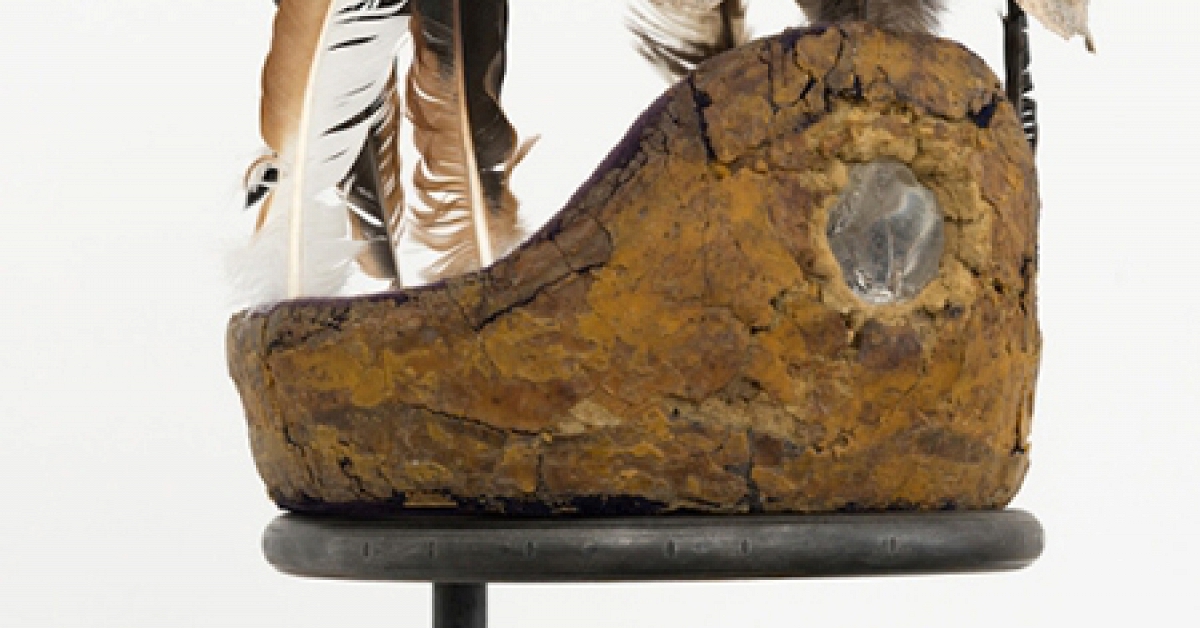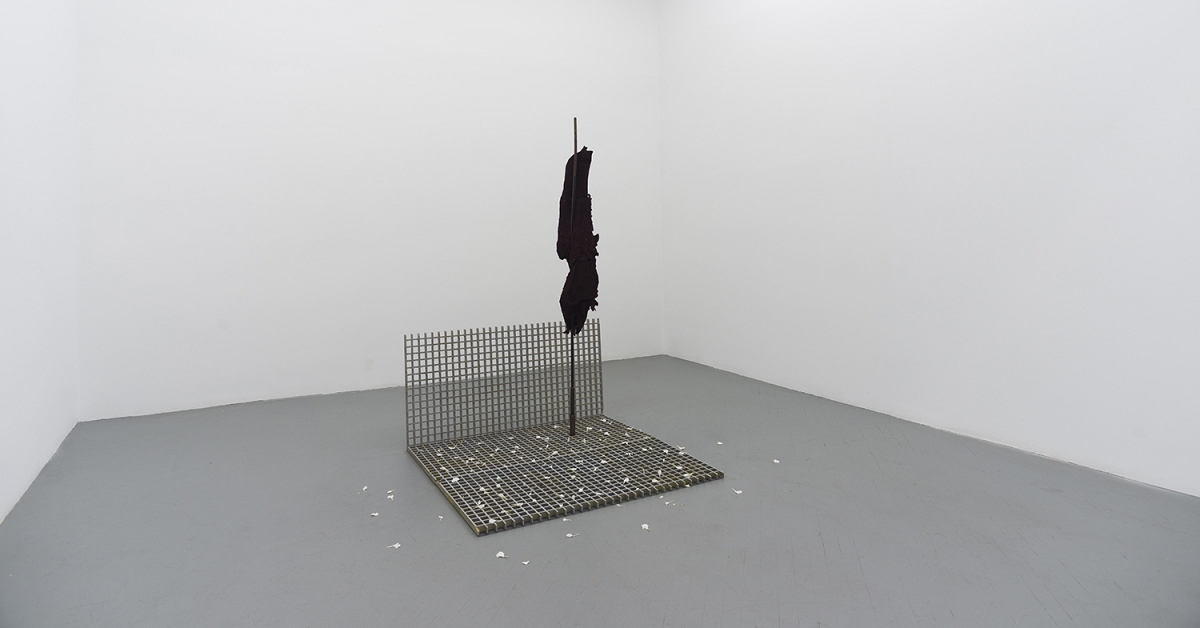MoMA’s Human Focus
The Wall Street Journal / Mar 14, 2018 / by Richard B. Woodward / Go to Original
In its latest survey of new photography, the museum examines being in the world—with some powerful results.
Photographs in contemporary art exhibitions these days are as likely to be culled from the internet as they are to be taken with a camera by the artists themselves.
This is not a new method for making art. In the 1970s, Stephen Shore and others filled galleries and books with images rifled from magazines and archives. What’s changed is clickable, electronic access to the vastness of the picture universe, along with the post-’80s triumph of ideas-based practice over traditional photography. By recycling or referencing historical material, artists can address various thorny issues of representation while also relieving themselves from the onus of originality.
About one-third of the 85 pieces in the Museum of Modern Art’s “Being: New Photography 2018,” the latest iteration of its annual or biannual survey of emerging talent, use “found” photographs as an embedded or the sole element. What’s refreshing about several of the examples, though, is how emotionally stirring they are, often more so than works where the artist originated the images.
Assistant curator Lucy Gallun has selected 17 artists from eight countries who, she believes, give priority to “the subject of humanity or being in the world” from a range of “lived experiences and circumstances.”
Carmen Winant is an American writer and artist with only one piece here. That’s plenty. “My Birth” (2018) is a lulu and certain to attract crowds.
Attached with blue tape to two facing walls, in a narrow passage connecting two main galleries, are more than 2,000 small images of women in labor or giving birth. Reprinted from many sources, each one of these intimate, often graphic scenes—in black-and-white and color—is the same yet distinct.
Attached with blue tape to two facing walls, in a narrow passage connecting two main galleries, are more than 2,000 small images of women in labor or giving birth. Reprinted from many sources, each one of these intimate, often graphic scenes—in black-and-white and color—is the same yet distinct.
Most viewers will feel squeamish and ask themselves why. Are we intruding on the most private moment a woman can have? Or has Ms. Winant touched upon a more puzzling cultural taboo?
In assembling the work, she was shocked to find that such imagery is comparatively rare. She had to rely as much on analog documents, including feminist books from the ’70s, as digital ones. An event vital to everyone who has ever lived seems to be less photographed than weddings, football games, or murders.
Huong Ngo and Hong-An Truong have reproduced prints from family albums for their collaboration about the immigrant experience, titled “The opposite of looking is not invisibility. The opposite of yellow is not gold” (2016). Their mothers fled Vietnam for the U.S. at different times and found themselves categorized as “aliens,” underscored here by texts from congressional testimony. And yet, as snapshots reveal, the two women posed in remarkably similar fashion beside big American automobiles, suggesting that photography itself is essential in helping strangers to feel they belong in a place.
The American photographer Paul Mpagi Sepuya is already widely exhibited and collected. His portraits and self-portraits explore his identity as a black, gay man within the tradition of Constructivist collage. Using mirrors and cloths, he fragments, shrouds, divides and multiplies parts of the body, teasing the viewer to piece them together.
“Untitled” (2017) presents the smooth, muscular back of a male nude, torqued in the style of Michelangelo. Small reproduced photos by William Henry Fox Talbot and others are incorporated in the surface. It’s the most accomplished work of art in the show. No other is as self-consciously assured about engaging with the history of art.
Just as highly wrought is “Sin nombre” (2017-18) by Harold Mendez. This huge (7-by-15-foot) pale gray image of a boy on horseback in a forest pool is blown up from a glass negative that the American artist discovered in Havana.
Not every image here is appropriated. Matthew Connors’s documentary photographs of North Koreans, taken from 2013 to 2016, are sympathetic portraits of people who live in an alternative reality. They’re hard to read. Are they zombies, as sad as we think? Or do they take the same small pleasures from daily life that all of us do?
The mood of Adelita Husni-Bey’s series “The Council” (2018) is far from depressive. Asking alumni of MoMA’s teenage Digital Advisory Board to imagine a future when traditional functions of museums have been replaced by collectives, the Italian artist posed the group in scenarios and costumes they devised themselves.
They stand against backdrops or sit around tables, surrounded by handwritten signs that read “Access to Information” or “No New Building.” Capturing the spirit of youthful utopians everywhere, “The Council” celebrates the civic bonds of activism.
Whether or not the theme chosen by Ms. Gallun is meant to invoke “The Family of Man,” MoMA’s 1955 blockbuster exhibition and book, she has given “New Photography” needed heart and energy. The showcase is still too unwieldy. Four or five artists from around the world would be ideal. But this is the most promising crop of photographers to appear here in many years.
Photographs in contemporary art exhibitions these days are as likely to be culled from the internet as they are to be taken with a camera by the artists themselves.
This is not a new method for making art. In the 1970s, Stephen Shore and others filled galleries and books with images rifled from magazines and archives. What’s changed is clickable, electronic access to the vastness of the picture universe, along with the post-’80s triumph of ideas-based practice over traditional photography. By recycling or referencing historical material, artists can address various thorny issues of representation while also relieving themselves from the onus of originality.
About one-third of the 85 pieces in the Museum of Modern Art’s “Being: New Photography 2018,” the latest iteration of its annual or biannual survey of emerging talent, use “found” photographs as an embedded or the sole element. What’s refreshing about several of the examples, though, is how emotionally stirring they are, often more so than works where the artist originated the images.
Assistant curator Lucy Gallun has selected 17 artists from eight countries who, she believes, give priority to “the subject of humanity or being in the world” from a range of “lived experiences and circumstances.”
Carmen Winant is an American writer and artist with only one piece here. That’s plenty. “My Birth” (2018) is a lulu and certain to attract crowds.
Attached with blue tape to two facing walls, in a narrow passage connecting two main galleries, are more than 2,000 small images of women in labor or giving birth. Reprinted from many sources, each one of these intimate, often graphic scenes—in black-and-white and color—is the same yet distinct.
Attached with blue tape to two facing walls, in a narrow passage connecting two main galleries, are more than 2,000 small images of women in labor or giving birth. Reprinted from many sources, each one of these intimate, often graphic scenes—in black-and-white and color—is the same yet distinct.
Most viewers will feel squeamish and ask themselves why. Are we intruding on the most private moment a woman can have? Or has Ms. Winant touched upon a more puzzling cultural taboo?
In assembling the work, she was shocked to find that such imagery is comparatively rare. She had to rely as much on analog documents, including feminist books from the ’70s, as digital ones. An event vital to everyone who has ever lived seems to be less photographed than weddings, football games, or murders.
Huong Ngo and Hong-An Truong have reproduced prints from family albums for their collaboration about the immigrant experience, titled “The opposite of looking is not invisibility. The opposite of yellow is not gold” (2016). Their mothers fled Vietnam for the U.S. at different times and found themselves categorized as “aliens,” underscored here by texts from congressional testimony. And yet, as snapshots reveal, the two women posed in remarkably similar fashion beside big American automobiles, suggesting that photography itself is essential in helping strangers to feel they belong in a place.
The American photographer Paul Mpagi Sepuya is already widely exhibited and collected. His portraits and self-portraits explore his identity as a black, gay man within the tradition of Constructivist collage. Using mirrors and cloths, he fragments, shrouds, divides and multiplies parts of the body, teasing the viewer to piece them together.
“Untitled” (2017) presents the smooth, muscular back of a male nude, torqued in the style of Michelangelo. Small reproduced photos by William Henry Fox Talbot and others are incorporated in the surface. It’s the most accomplished work of art in the show. No other is as self-consciously assured about engaging with the history of art.
Just as highly wrought is “Sin nombre” (2017-18) by Harold Mendez. This huge (7-by-15-foot) pale gray image of a boy on horseback in a forest pool is blown up from a glass negative that the American artist discovered in Havana.
Not every image here is appropriated. Matthew Connors’s documentary photographs of North Koreans, taken from 2013 to 2016, are sympathetic portraits of people who live in an alternative reality. They’re hard to read. Are they zombies, as sad as we think? Or do they take the same small pleasures from daily life that all of us do?
The mood of Adelita Husni-Bey’s series “The Council” (2018) is far from depressive. Asking alumni of MoMA’s teenage Digital Advisory Board to imagine a future when traditional functions of museums have been replaced by collectives, the Italian artist posed the group in scenarios and costumes they devised themselves.
They stand against backdrops or sit around tables, surrounded by handwritten signs that read “Access to Information” or “No New Building.” Capturing the spirit of youthful utopians everywhere, “The Council” celebrates the civic bonds of activism.
Whether or not the theme chosen by Ms. Gallun is meant to invoke “The Family of Man,” MoMA’s 1955 blockbuster exhibition and book, she has given “New Photography” needed heart and energy. The showcase is still too unwieldy. Four or five artists from around the world would be ideal. But this is the most promising crop of photographers to appear here in many years.






